AGW Gatekeepers Censor The CO2-Climate Debate By Refusing To Publish Author’s Response To Criticism
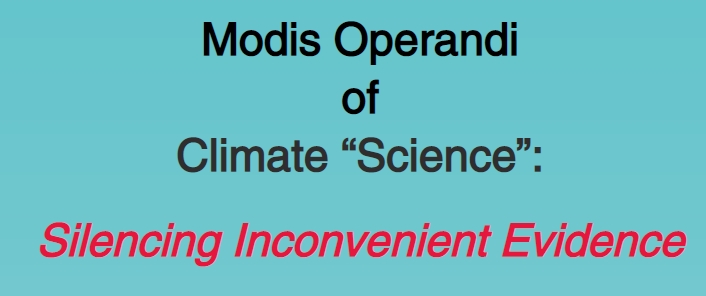
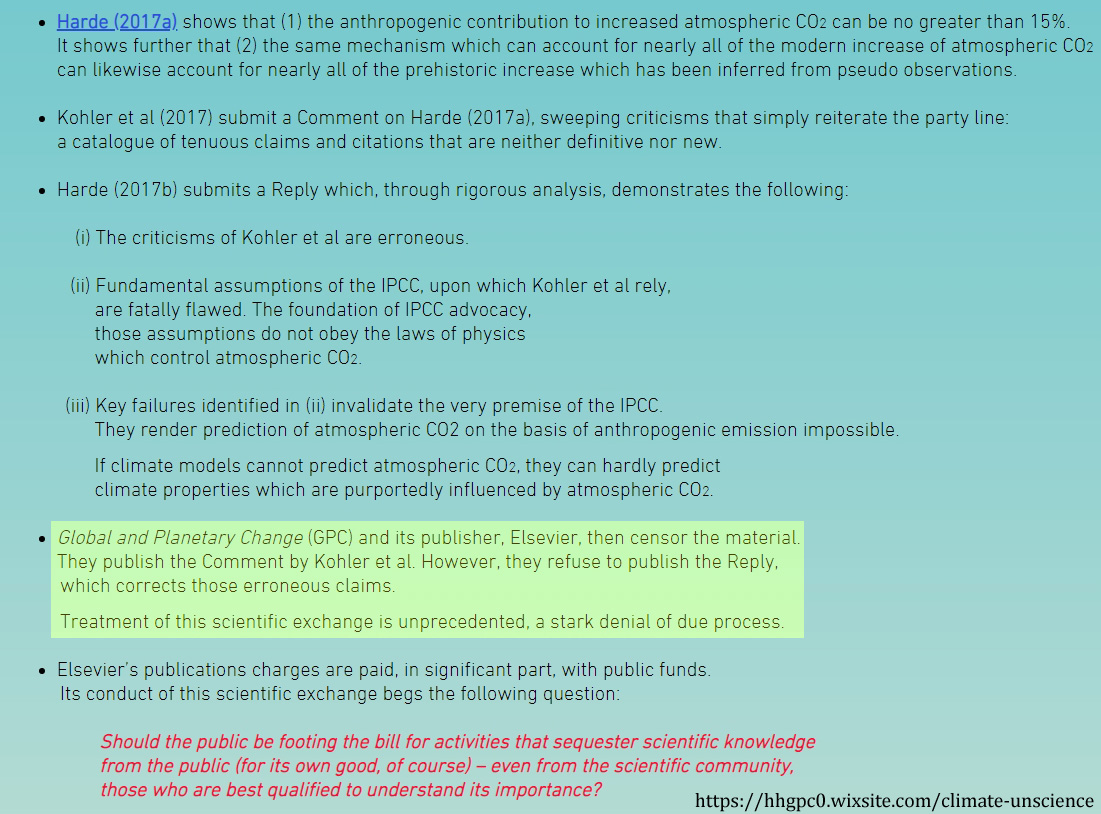
Image Source: https://hhgpc0.wixsite.com/climate-unscience
We have yet another example of AGW advocates like Gavin Schmidt running away from real scientific debates with skeptics.
After receiving appeal-to-authority pressure from Gavin Schmidt and other activists at RealClimate.org, the overseers of the Elsevier journal Global and Planetary Change have refused to allow the public to read the exhaustive response to criticisms levied against a peer-reviewed paper they originally agreed to publish.
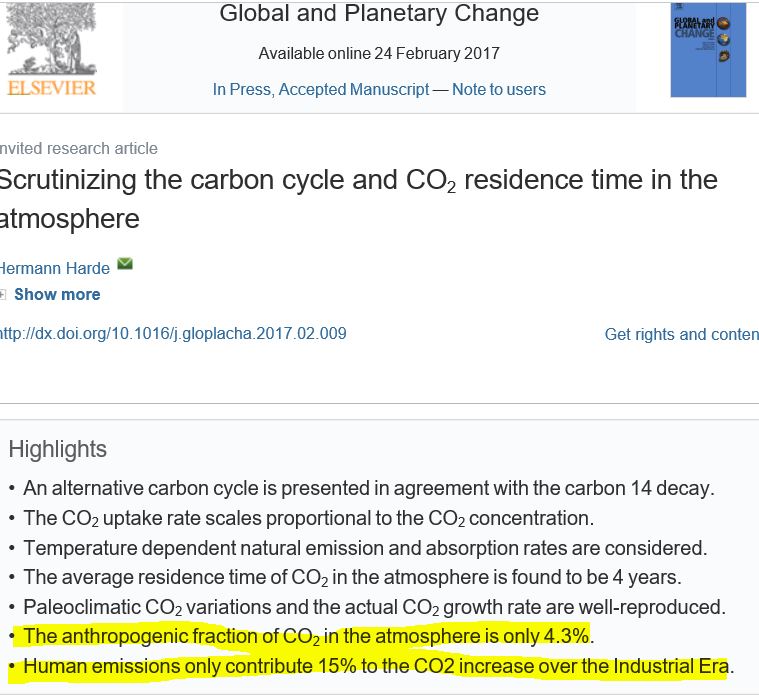
Image Source: Harde, 2017
Critiquing Via Misrepresentation and Models
Within months after the Harde paper was published, Köhler et al. (2017), was quickly cobbled together and published in Global and Planetary Change in an attempt to “refute” the conclusions of the Harde (2017) paper.
The problem was, Köhler et al. (2017) did not accurately critique the actual points made in the original paper, but instead they devised alternative or erroneous versions of Harde’s positions and then critiqued those instead. In other words, they used the straw man argumenttactic in their “rebuttal” paper.
In an unpublished response to the Köhler “critque” paper, Harde contends that Köhler et al. also employ “ad hoc”argumentation, “circular reasoning”, the “failure of logic” inherent in the practice of “validation by consensus”, and an overall reliance on models and assumptions rather than observation.
Excerpts from the unpublished response to Köhler et al. (2017):
“Köhler et al. list the production of anthropogenic carbon from 1750 to 2010 as 518 PgC, corresponding to 1,901 Pg of CO2. Of this, about 45% is assumed to have accumulated in the atmosphere. This value, the so-called “Airborne Fraction” (AF), is ad hoc – an artifact of presuming that increased CO2 follows exclusively from anthropogenic emission. During the same period, cumulative natural emission and absorption were 100 times greater: 727.3 Pg/yr x 260 yr = 189,000 Pg. Cumulative anthropogenic CO2 was therefore less than 0.5% of total emission into the atmosphere. If the airborne fraction of anthropogenic CO2 is arbitrarily assumed, absorption of anthropogenic CO2 follows directly. The result, however, derives from circular reasoning. It is no more reliable than the assumption upon which it is based.”
“Despite huge uncertainties, climate models are invoked to claim that absorption of anthropogenic CO2 will quickly become saturated, forcing anthropogenic CO2 to accumulate in the atmosphere: ‘Uptake of anthropogenic carbon will become slower if we continue to increase anthropogenic CO2 emissions’. Like others, this claim rests upon models that are largely ad hoc. It is therefore speculative.”
“[O]bserved absorption, in the record of 14C, exhibits no evidence of saturation. Climate models are even invoked to claim in which layers of the ocean carbon will accumulate and, thereby, lead to acidification. Such claims are little more than hypothetical. Observations necessary to substantiate or falsify them are nonexistent. The models upon which the claims rely are themselves grossly under-constrained. Observations are simply too scarce to configure model parameterizations uniquely.”
“Köhler et al. present an inventory of carbon which is purported to quantify changes in the various surface and sub-surface reservoirs, thereby isolating absorption of anthropogenic CO2. To claim that extraneous systems, like the carbon content of soil, vegetation (canopy and below, as well as decomposing), the sub-surface ocean, and marine sediments, are known with even close to the precision necessary to quantify those properties globally is preposterous. … Without global observations necessary to quantify those properties, the purported inventory of changes that could be associated with absorption of anthropogenic CO2 is fanciful.”
“Köhler et al. also argue that the analogy to radiocarbon is incorrect – because, they claim, changes in the bulk inventory of CO2 would be confused with changes in tracers at minute concentration. What is confused is Köhler et al.’s interpretation. Carbon 14 is a tracer of overall carbon, which is dominated by carbon 12. 14C is therefore a tracer of atmospheric CO2. Exponential decay of 14C following elimination of the nuclear source (Fig. 1) is then a direct measure of overall absorption of CO2 – because, with the elimination of that perturbing source, the conservation law for 14C reduces to (3).”
“Köhler et al. argue that the signature of absorption in 14C is corrupted by dilution via fossil fuel emission, which is mostly free of 14C (the so-called Suess effect). The claim is specious. Dilution by fossil-fuel emission that is 14C-free has negligible influence on the decay time of 14C (Appendix B).10 Far more influential is re-emission of 14C from the Earth’s surface: 14C that was recently absorbed from the atmosphere, for example, by vegetation that subsequently decomposes and re-emits that 14C along with
other CO2.”
“It should be noted that the heading of Köhler et al.’s Section 3 is misleading. We did not claim to model carbon in the complete Earth-atmosphere system. That would require a wider analysis, accounting for processes within extraneous systems and exchanges between them. Our analysis focuses upon CO2 in the atmosphere, which is controlled by the governing conservation law. Köhler et al. characterize this physical law as a flawed 1-box description – because, they claim, a single balance equation does not account for details in other reservoirs, systems that are extraneous to the atmosphere. Köhler et al.’s interpretation is confused. With the inclusion of surface fluxes eT and a, which account for influences on the atmosphere, the balance equation (1) entirely determines the evolution of CO2. Details of extraneous systems, which are largely unobservable, are then irrelevant.”
“Köhler et al. claim that the ice core record of CO2 perfectly matches the modern record of actual atmospheric measurements. With respect, this claim is preposterous.”
“Köhler et al. claim that references to material which inspired our investigation but which has either been criticized provincially, on dubious merits, or has not appeared in a journal are invalid. Among the treatments invoked by Köhler et al. to discount contradictory evidence are treatments which were shown in Section 1 to be unphysical. Köhler et al.’s complaint over source is ironic, contradicting their own position. To challenge our demonstration of fundamental physics, they cite material, even casual opinion, that was published on the internet. Accordingly, Köhler et al. expect one standard for others, but another for themselves.”
“Köhler et al.’s Comment is devoid of concrete analysis. Its tenor is to inundate the reader with citations, a reiteration of the IPCC catalogue. It amounts to validation by consensus, a failure of logic that has been quashed repeatedly in the history of science (see, e.g., Hawking, 1988).”
Köhler et al. Contradicted By Observed Evidence
“The observed behavior of carbon 14 demonstrates that this is not the case (Fig. 1). Its rapid decay following elimination of the perturbing nuclear source makes it clear that present absorption of CO2 is 1-2 orders of magnitude faster than that claimed by Köhler et al.”
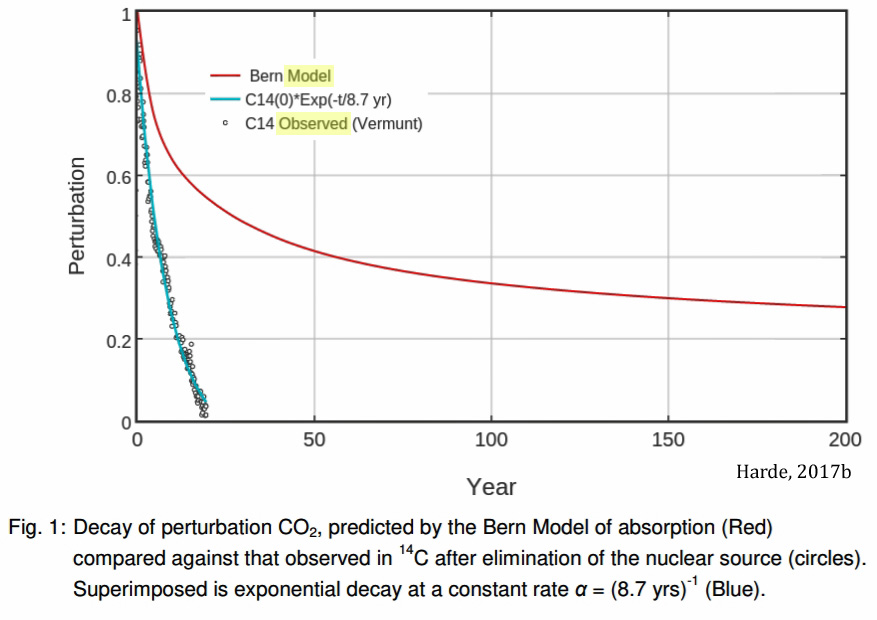
Image Source: Harde, 2017b
“The treatment of absorption is specious. Notice: Absorption of CO2 is nonzero even if CO2 concentration vanishes. CO2 is therefore removed from the atmosphere even if there is no CO2 in the atmosphere. What world such treatment describes is unclear. What is clear is that it is not the physical world. This error is fatal. Changes of CO2 relying on it cannot satisfy the conservation law which is satisfied by CO2 in the atmosphere (Fig. 1).”
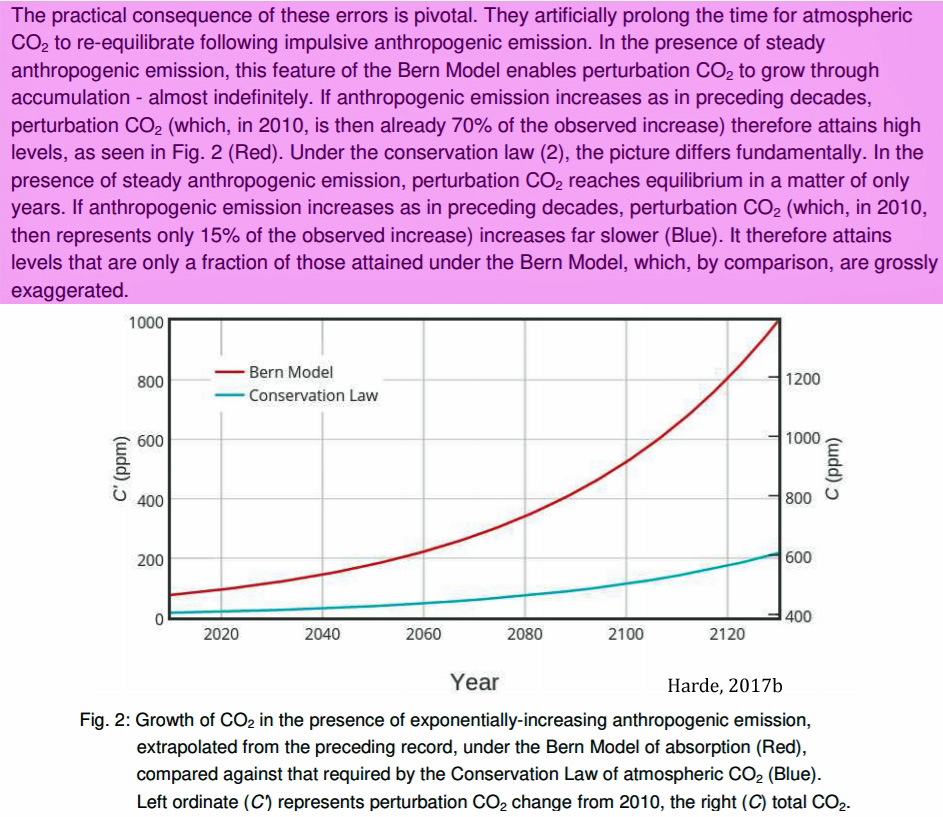
Image Source: Harde, 2017b
Links To The Censorship Sequence
Below is a summary of the silencing of scientific debate by the bloggers at RealClimate.org and by the overseers of the Global and Planetary Change journal.
1. The original (full) paper published in Global and Planetary Change:
“Scrutinizing the carbon cycle and CO2 residence time in the atmosphere”
2. The RealClimate.org (blog) response is immediate. Dr. Gavin Schmidt insists that the paper must not have been properly peer-reviewed:
“Something Harde to believe…” (Dr. Gavin Schmidt, RealClimate.org)
3. The Köhler et al. (2017) (full) critical response to the paper:
Comment on “Scrutinizing the carbon cycle and CO2 residence time in the atmosphere” by H. Harde
4. Elsevier acknowledges their transgression in publishing a paper that didn’t conform to AGW dogma:
“Flawed climate science paper ‘exposed potential weaknesses’ in the peer review process”
5. Dr. Hermann Harde’s Reply (full) to criticism of his paper goes unpublished, censoring debate:
Reply to Comment on “Scrutinizing the carbon cycle and CO2 residence time in the atmosphere”
Uncensored access to the full Reply paper is available here:

